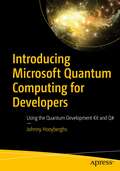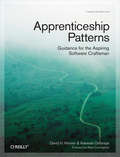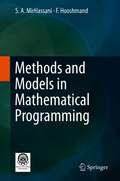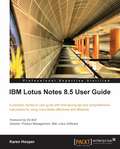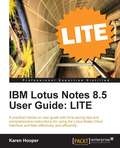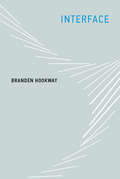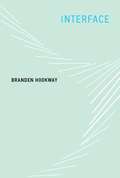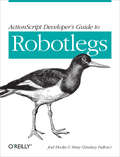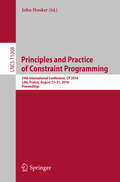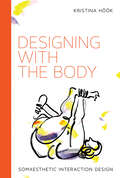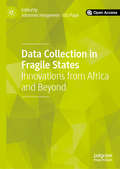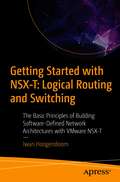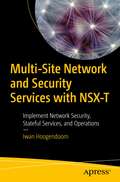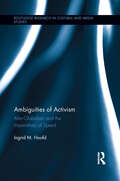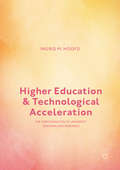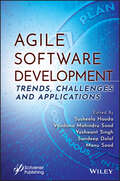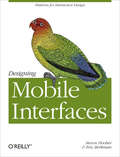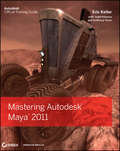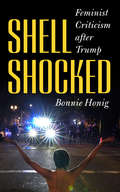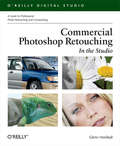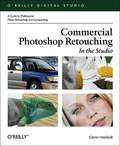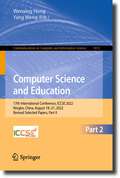- Table View
- List View
Introducing Microsoft Quantum Computing for Developers: Using the Quantum Development Kit and Q#
by Johnny HooyberghsDive in with this hands-on introduction to quantum computing with the Microsoft Quantum Development Kit and Q# for software developers. You may have heard about quantum computing, but what does it mean to you as a software developer? With many new developments, a resurgence in interest, and investment by some of the largest tech companies in the world to be the first to market with quantum programming (QP) hardware and platforms, it is no longer a tool in the distant future. Developers are at the forefront, now able to create applications that take advantage of QP through simulations. While the skill is of interest, for many developers, quantum computing and its implications still remains a mystery. In this book, you will get up to speed exploring important quantum concepts and apply them in practice through writing actual quantum algorithms, using the Microsoft Quantum Development Kit. Theoretical knowledge about quantum physics, such as superposition and entanglement, will be used to explain quantum computing topics, including quantum gates, quantum circuits, and quantum algorithms. Finally, take a tour of the new Azure Quantum. Use Q#, Microsoft's new programming language, to target quantum hardware. You will select your supporting language of choice, either C# or Python, to begin writing your quantum applications. Combined with just enough theoretical preparation, you will learn how to get your computer ready to simulate basic quantum programs using Microsoft Visual Studio or Visual Studio Code and Q#. What You Will Learn Get up to speed on the platform-independent quantum tool set using the Microsoft Quantum Development Kit simulator and Visual Studio Code or Microsoft Visual Studio Know the basics of quantum mechanics required to start working on quantum computing Understand mathematical concepts such as complex numbers, trigonometry, and linear algebra Install the Microsoft Quantum Development Kit on a Windows or Linux PC with Visual Studio Code or Microsoft Visual Studio Write quantum algorithms with the Microsoft Quantum Development Kit and Q#, supported by C# or Python Discover insights on important existing quantum algorithms such as Deutch, Deutch-Jozsa, and the fun CHSH-game Get introduced to quantum as a service using the Microsoft Azure Quantum preview cloud offering Who This Book Is ForDevelopers who are interested in quantum computing, specifically those software developers who are planning on using quantum computers in the future. Basic imperative programming knowledge is useful to understand the syntax and structure found in the Q# programming language. Knowledge of Microsoft C# or Python is not required since these languages are only used to support the simulation of Q# on a classical computer.
Apprenticeship Patterns: Guidance for the Aspiring Software Craftsman
by Dave Hoover Adewale OshineyeAre you doing all you can to further your career as a software developer? With today's rapidly changing and ever-expanding technologies, being successful requires more than technical expertise. To grow professionally, you also need soft skills and effective learning techniques. Honing those skills is what this book is all about. Authors Dave Hoover and Adewale Oshineye have cataloged dozens of behavior patterns to help you perfect essential aspects of your craft. Compiled from years of research, many interviews, and feedback from O'Reilly's online forum, these patterns address difficult situations that programmers, administrators, and DBAs face every day. And it's not just about financial success. Apprenticeship Patterns also approaches software development as a means to personal fulfillment. Discover how this book can help you make the best of both your life and your career. Solutions to some common obstacles that this book explores in-depth include: Burned out at work? "Nurture Your Passion" by finding a pet project to rediscover the joy of problem solving. Feeling overwhelmed by new information? Re-explore familiar territory by building something you've built before, then use "Retreat into Competence" to move forward again. Stuck in your learning? Seek a team of experienced and talented developers with whom you can "Be the Worst" for a while. "Brilliant stuff! Reading this book was like being in a time machine that pulled me back to those key learning moments in my career as a professional software developer and, instead of having to learn best practices the hard way, I had a guru sitting on my shoulder guiding me every step towards master craftsmanship. I'll certainly be recommending this book to clients. I wish I had this book 14 years ago!" -Russ Miles, CEO, OpenCredo
Methods and Models in Mathematical Programming
by F. Hooshmand S. A. MirHassaniThis book focuses on mathematical modeling, describes the process of constructing and evaluating models, discusses the challenges and delicacies of the modeling process, and explicitly outlines the required rules and regulations so that the reader will be able to generalize and reuse concepts in other problems by relying on mathematical logic.Undergraduate and postgraduate students of different academic disciplines would find this book a suitable option preparing them for jobs and research fields requiring modeling techniques. Furthermore, this book can be used as a reference book for experts and practitioners requiring advanced skills of model building in their jobs.
IBM Lotus Notes 8.5 User Guide
by Karen HooperA compact Lotus Notes User Guide, this book covers best practices, hints, tips, and tricks of Lotus Notes 8.5. It draws on real-world examples and you will find this book to be an invaluable reference for Lotus Notes. There are significant changes from the earlier versions of Lotus Notes to the current version of 8.5 and this book covers the new features in detail so that you will be able to take advantage of them. However, this book also covers key features from earlier versions, which have stood the test of time. If you are a business user who wants to get the most out of Lotus Notes, then this book is for you. From beginners to seasoned professionals, this book aims to cover the features, best practices, tips, tricks, and tools that enable you to work smarter--almost effortlessly--in Lotus Notes 8.5.
IBM Lotus Notes 8.5 User Guide: LITE
by Karen HoopeA compact Lotus Notes User Guide, this book covers best practices, hints, tips, and tricks of Lotus Notes 8.5 Client Interface and Mail features. It draws on real-world examples and you will find this book to be an invaluable reference for Lotus Notes. The material has been carefully selected from Packt's fuller IBM Lotus Notes 8.5 User Guide. If you are a business user who wants to get the most out of Lotus Notes, then this book is for you. From beginners to seasoned professionals, this book aims to cover the Client Interface and Mail features, best practices, tips, tricks, and tools that enable you to work smarter--almost effortlessly--in Lotus Notes 8.5.
Interface (The\mit Press Ser.)
by Branden HookwayA cultural theory of the interface as a relation that is both ubiquitous and elusive, drawing on disciplines from cultural theory to architecture.In this book, Branden Hookway considers the interface not as technology but as a form of relationship with technology. The interface, Hookway proposes, is at once ubiquitous and hidden from view. It is both the bottleneck through which our relationship to technology must pass and a productive encounter embedded within the use of technology. It is a site of contestation—between human and machine, between the material and the social, between the political and the technological—that both defines and elides differences.A virtuoso in multiple disciplines, Hookway offers a theory of the interface that draws on cultural theory, political theory, philosophy, art, architecture, new media, and the history of science and technology. He argues that the theoretical mechanism of the interface offers a powerful approach to questions of the human relationship to technology. Hookway finds the origin of the term interface in nineteenth-century fluid dynamics and traces its migration to thermodynamics, information theory, and cybernetics. He discusses issues of subject formation, agency, power, and control, within contexts that include technology, politics, and the social role of games. He considers the technological augmentation of humans and the human-machine system, discussing notions of embodied intelligence.Hookway views the figure of the subject as both receiver and active producer in processes of subjectification. The interface, he argues, stands in a relation both alien and intimate, vertiginous and orienting to those who cross its threshold.
Interface
by Branden HookwayIn this book, Branden Hookway considers the interface not as technology but as a form of relationship with technology. The interface, Hookway proposes, is at once ubiquitous and hidden from view. It is both the bottleneck through which our relationship to technology must pass and a productive encounter embedded within the use of technology. It is a site of contestation -- between human and machine, between the material and the social, between the political and the technological -- that both defines and elides differences. A virtuoso in multiple disciplines, Hookway offers a theory of the interface that draws on cultural theory, political theory, philosophy, art, architecture, new media, and the history of science and technology. He argues that the theoretical mechanism of the interface offers a powerful approach to questions of the human relationship to technology. Hookway finds the origin of the term interface in nineteenth-century fluid dynamics and traces its migration to thermodynamics, information theory, and cybernetics. He discusses issues of subject formation, agency, power, and control, within contexts that include technology, politics, and the social role of games. He considers the technological augmentation of humans and the human-machine system, discussing notions of embodied intelligence. Hookway views the figure of the subject as both receiver and active producer in processes of subjectification. The interface, he argues, stands in a relation both alien and intimate, vertiginous and orienting to those who cross its threshold.
ActionScript Developer's Guide to Robotlegs: Building Flexible Rich Internet Applications (Oreilly And Associate Ser.)
by Joel Hooks StrayRobotlegs is a standout among the ActionScript 3 development frameworks available today. With it, Flash, Flex, and AIR developers can create well-architected, testable, and flexible Rich Internet Applications--fast. This concise guide shows you how the light footprint and focused scope of this open source framework not only solves your immediate coding problems, it helps you gain insight into AS3 architecture on a much deeper level. The authors provide a walkthrough of specific features in two applications they've written in Robotlegs, complete with code for each application as a whole. You'll learn how to achieve a balance of flexibility and consistency in your own projects. Solve 80% of your coding problems with 20% of the API Gain code-base flexibility with automated Dependency Injection Learn the anatomy of a Robotlegs application Understand the relationships between models, services, control code, and views in the framework's MVCS architecture See how the Robotlegs' approach facilitates Test Driven Development (TDD) Pick up practical methods for architecting Robotlegs solutions Get expert insights to power-up your existing Robotlegs code
Principles and Practice of Constraint Programming: 24th International Conference, Cp 2018, Lille, France, August 27-31, 2018, Proceedings (Lecture Notes in Computer Science #11008)
by John HookerThis book constitutes the proceedings of the 24th International Conference on Principles and Practice of Constraint Programming, CP 2018, held in Lille, France, in August 2018.The 41 full and 9 short papers presented in this volume were carefully reviewed and selected from 114 submissions. They deal with all aspects of computing with constraints including theory, algorithms, environments, languages, models, systems, and applications such as decision making, resource allocation, scheduling, configuration, and planning. The papers were organized according to the following topics/tracks: main technical track; applications track; CP and data science; CP and music; CP and operations research; CP, optimization and power system management; multiagent and parallel CP; and testing and verification.
Designing with the Body: Somaesthetic Interaction Design (Design Thinking, Design Theory)
by Kristina HookInteraction design that entails a qualitative shift from a symbolic, language-oriented stance to an experiential stance that encompasses the entire design and use cycle. With the rise of ubiquitous technology, data-driven design, and the Internet of Things, our interactions and interfaces with technology are about to change dramatically, incorporating such emerging technologies as shape-changing interfaces, wearables, and movement-tracking apps. A successful interactive tool will allow the user to engage in a smooth, embodied, interaction, creating an intimate correspondence between users' actions and system response. And yet, as Kristina Höök points out, current design methods emphasize symbolic, language-oriented, and predominantly visual interactions. In Designing with the Body, Höök proposes a qualitative shift in interaction design to an experiential, felt, aesthetic stance that encompasses the entire design and use cycle. Höök calls this new approach soma design; it is a process that reincorporates body and movement into a design regime that has long privileged language and logic. Soma design offers an alternative to the aggressive, rapid design processes that dominate commercial interaction design; it allows (and requires) a slow, thoughtful process that takes into account fundamental human values. She argues that this new approach will yield better products and create healthier, more sustainable companies. Höök outlines the theory underlying soma design and describes motivations, methods, and tools. She offers examples of soma design “encounters” and an account of her own design process. She concludes with “A Soma Design Manifesto,” which challenges interaction designers to “restart” their field—to focus on bodies and perception rather than reasoning and intellect.
Autocomplete: The Book
by Justin HookEvery time a browser autocompletes our search query, it's showing us what millions of other people all over the world are searching for. This curious collection showcases the very best of the often strange yet 100% real autocomplete suggestions offered up by popular search engines, compiling them into one hilarious, fascinating, and mildly disturbing volume. Each page contains one search and its 10 best autocomplete suggestions, including the most and least common, from "Why is Ryan Gosling...eating cereal?" to "If the Earth is round...why are shoes flat?" With easy-to-read spreads and playful black-and-white line art throughout, Autocomplete provides a nearly unfiltered look at what people actually search for when they think no one's watching.
Data Collection in Fragile States: Innovations from Africa and Beyond
by Johannes Hoogeveen Utz Pape‘This open access book addresses an urgent issue on which little organized information exists. It reflects experience in Africa but is highly relevant to other fragile states as well.’ —Constantine Michalopoulos, John Hopkins University, USA and former Director of Economic Policy and Co-ordination at the World BankFragile countries face a triple data challenge. Up-to-date information is needed to deal with rapidly changing circumstances and to design adequate responses. Yet, fragile countries are among the most data deprived, while collecting new information in such circumstances is very challenging. This open access book presents innovations in data collection developed with decision makers in fragile countries in mind. Looking at innovations in Africa from mobile phone surveys monitoring the Ebola crisis, to tracking displaced people in Mali, this collection highlights the challenges in data collection researchers face and how they can be overcome.
Getting Started with NSX-T: The Basic Principles of Building Software-Defined Network Architectures with VMware NSX-T
by Iwan HoogendoornThis primer on NSX-T helps you understand the capabilities and features of NSX-T, how to configure and manage NSX-T, and integrate NSX-T with other software. The book is the first in a series that will teach you the basics of NSX-T, which is an update of VMware's original software-defined networking (SDN) architecture aimed at making networks agile and flexible.You will become familiar with VMware's software-defined data center (SDDC) ecosystem and how NSX-T fits in. You will understand NSX-T components such as NSX-T Manager, NSX-T Edge Transport Nodes, and NSX-T Host Transport Nodes. And you will learn how to install and configure network services such as East/West and North/South routing capabilities, layer two switching, VRF, EVPN, multicast, and layer two bridging.The book provides best practices on how to configure routing and switching features, and teaches you how to get the required visibility of not only your NSX-T platform but also your NSX-T-enabled network infrastructure. The book explains security, advanced network features, and multi-site capabilities and demonstrates how network and security services can be offered across multiple on-premise locations with a single pane of glass for networking and security policy management. The interface with public cloud services is discussed and the book explains NSX-T operation in an on-premise private cloud and positioning and integrating NSX-T on a public cloud (off premises).What You Will Learn Understand how NSX-T fits in the VMware SDDC ecosystemKnow what NSX-T is, its components, and the terminology usedInstall NSX-TConfigure NSX-T network servicesManage the NSX-T networkWho This Book Is ForVirtualization administrators, system integrators, and network administrators
Multi-Site Network and Security Services with NSX-T: Implement Network Security, Stateful Services, and Operations
by Iwan HoogendoornKnow the basics of network security services and other stateful services such as NAT, gateway and distributed firewalls (L2-L7), virtual private networks (VPN), load balancing (LB), and IP address management. This book covers these network and security services and how NSX-T also offers integration and interoperability with various other products that are not only created by VMware, but are also referred by VMware as third-party integrated vendors.With the integration of VMware vRealize Automation, you can automate full application platforms consisting of multiple virtual machines with network and security services orchestrated and fully automated.From the operational perspective, this book provides best practices on how to configure logging, notification, and monitoring features and teaches you how to get the required visibility of not only your NSX-T platform but also your NSX-T-enabled network infrastructure.Another key part of this book is the explanation of multi-site capabilities and how network and security services can be offered across multiple on-premises locations with a single management pane. Interface with public cloud services also is included. The current position of NSX-T operation in on-premises private clouds and the position and integration with off-premises public clouds are covered as well.This book provides a good understanding of integrations with other software to bring the best out of NSX-T and offer even more features and capabilities.What You Will LearnUnderstand the NSX-T security firewall and advanced securityBecome familiar with NAT, DNS, DHCP, and load balancing featuresMonitor your NSX-T environmentBe aware of NSX-T authentication and authorization possibilitiesUnderstand integration with cloud automation platformsKnow what multi-cloud integrations are possible and how to integrate NSX-T with the public cloud Who This Book Is ForVirtualization administrators, system integrators
The Cellular Automaton Interpretation of Quantum Mechanics
by Gerard 'T HooftThis book presents the deterministic view of quantum mechanics developed by Nobel Laureate Gerard 't Hooft. Dissatisfied with the uncomfortable gaps in the way conventional quantum mechanics meshes with the classical world, 't Hooft has revived the old hidden variable ideas, but now in a much more systematic way than usual. In this, quantum mechanics is viewed as a tool rather than a theory. The author gives examples of models that are classical in essence, but can be analysed by the use of quantum techniques, and argues that even the Standard Model, together with gravitational interactions, might be viewed as a quantum mechanical approach to analysing a system that could be classical at its core. He shows how this approach, even though it is based on hidden variables, can be plausibly reconciled with Bell's theorem, and how the usual objections voiced against the idea of 'superdeterminism' can be overcome, at least in principle. This framework elegantly explains - and automatically cures - the problems of the wave function collapse and the measurement problem. Even the existence of an "arrow of time" can perhaps be explained in a more elegant way than usual. As well as reviewing the author's earlier work in the field, the book also contains many new observations and calculations. It provides stimulating reading for all physicists working on the foundations of quantum theory.
Federal Trade Commission Privacy Law and Policy
by Chris Jay HoofnagleThe Federal Trade Commission, a US agency created in 1914 to police the problem of 'bigness', has evolved into the most important regulator of information privacy - and thus innovation policy - in the world. Its policies profoundly affect business practices and serve to regulate most of the consumer economy. In short, it now regulates our technological future. Despite its stature, however, the agency is often poorly understood by observers and even those who practice before it. This volume by Chris Jay Hoofnagle - an internationally recognized scholar with more than fifteen years of experience interacting with the FTC - is designed to redress this confusion by explaining how the FTC arrived at its current position of power. It will be essential reading for lawyers, legal academics, political scientists, historians and anyone else interested in understanding the FTC's privacy activities and how they fit in the context of the agency's broader consumer protection mission.
Ambiguities of Activism: Alter-Globalism and the Imperatives of Speed (Routledge Research in Cultural and Media Studies #43)
by Ingrid M. HoofdThis volume provides a critical and in-depth investigation of the relationship between alter-globalist thinking and practices and their popular discourses. It examines the ways in which several alter-globalist activist groups (like Indymedia, no-borders campaigns, and forms of climate change activism), as well as left-wing intellectuals and academics (like Michael Hardt, Al Gore, Antonio Negri, Hakim Bey, and Geert Lovink), mobilize problematic discourses, tools, and divisions in an attempt to overcome gendered, raced, and classed oppressions worldwide. The book draws out how these mobilizations and theorizations, despite (or possibly because of) their liberatory claims, are actually implicated in the intensification of global hierarchies by repeatedly invoking narratives of transcendence, connection, progress, and in particular of speed. Hoofd argues that the humanist ideals that underlie all these practices paradoxically trigger increasing disenfranchisements worldwide.
Higher Education and Technological Acceleration: The Disintegration of University Teaching and Research
by Ingrid M. HoofdThis book critically examines the relationship between new media technologies, research ethics, and pedagogical strategies within the contemporary university. It debates whether recent transformations of higher education, rather than an effect of neo-liberalization, are actually an outflow of the technological acceleration of the university's own contradictory ideals around knowledge and democracy. The book sets up this argument by likening the university to a "vision machine" which quest for total scientific and social transparency has recently caved in on itself, negatively affecting staff and student well-being. The book asserts that this situation reveals the essential tension at the heart of the university system, and explores the acceleration of this tension by analyzing a variety of teaching and research advances from Europe and Asia. Examining among other issues the call for creativity and critical thinking in the curriculum, the push for e-learning, and the advent of the digital humanities, this text offers a key analysis of the university's founding ideals and its constitutive relationship to technological acceleration.
Agile Software Development: Trends, Challenges and Applications
by Susheela Hooda Vandana Mohindru Sood Yashwant Singh Sandeep Dalal Manu SoodAGILE SOFTWARE DEVELOPMENT A unique title that introduces the whole range of agile software development processes from the fundamental concepts to the highest levels of applications such as requirement analysis, software testing, quality assurance, and risk management. Agile Software Development (ASD) has become a popular technology because its methods apply to any programming paradigm. It is important in the software development process because it emphasizes incremental delivery, team collaboration, continuous planning, and learning over delivering everything at once near the end. Agile has gained popularity as a result of its use of various frameworks, methods, and techniques to improve software quality. Scrum is a major agile framework that has been widely adopted by the software development community. Metaheuristic techniques have been used in the agile software development process to improve software quality and reliability. These techniques not only improve quality and reliability but also test cases, resulting in cost-effective and time-effective software. However, many significant research challenges must be addressed to put such ASD capabilities into practice. With the use of diverse techniques, guiding principles, artificial intelligence, soft computing, and machine learning, this book seeks to study theoretical and technological research findings on all facets of ASD. Also, it sheds light on the latest trends, challenges, and applications in the area of ASD. This book explores the theoretical as well as the technical research outcomes on all the aspects of Agile Software Development by using various methods, principles, artificial intelligence, soft computing, and machine learning. Audience The book is designed for computer scientists and software engineers both in research and industry. Graduate and postgraduate students will find the book accessible as well.
Designing Mobile Interfaces
by Steven Hoober Eric BerkmanWith hundreds of thousands of mobile applications available today, your app has to capture users immediately. This book provides practical techniques to help you catch--and keep--their attention. You'll learn core principles for designing effective user interfaces, along with a set of common patterns for interaction design on all types of mobile devices. Mobile design specialists Steven Hoober and Eric Berkman have collected and researched 76 best practices for everything from composing pages and displaying information to the use of screens, lights, and sensors. Each pattern includes a discussion of the design problem and solution, along with variations, interaction and presentation details, and antipatterns. Compose pages so that information is easy to locate and manipulate Provide labels and visual cues appropriate for your app's users Use information control widgets to help users quickly access details Take advantage of gestures and other sensors Apply specialized methods to prevent errors and the loss of user-entered data Enable users to easily make selections, enter text, and manipulate controls Use screens, lights, haptics, and sounds to communicate your message and increase user satisfaction "Designing Mobile Interfaces is another stellar addition to O'Reilly's essential interface books. Every mobile designer will want to have this thorough book on their shelf for reference." --Dan Saffer, Author of Designing Gestural Interfaces
Mastering Autodesk Maya 2011
by Anthony Honn Todd Palamar Eric KellerA beautifully-packaged, advanced reference on the very latest version of MayaIf you already know the basics of Maya, the latest version of this authoritative book takes you to the next level. From modeling, texturing, animation, and visual effects to high-level techniques for film, television, games, and more, this book provides professional-level Maya instruction. With pages of scenarios and examples from some of the leading professionals in the industry, this book will help you master the entire CG production pipeline.Provides professional-level instruction on Maya, the industry-leading 3D animation and effects software Covers the very latest Maya tools and features, including Dynamics, Maya Muscle, Stereo Cameras, rendering with mental ray, and more Offers complete coverage of advanced topics such as cloth, fur, and fluids Showcases the techniques of professionals through numerous examples and real-world scenarios, showing you how to set up and manage 3D animation and visual effects pipelines Includes a CD with all support files from the book, along with movies to illustrate concepts If you're looking for an in-depth, professional Maya resource to turn to again and again, Mastering Maya is the book you need.Note: CD-ROM/DVD and other supplementary materials are not included as part of eBook file.For Instructors: Teaching supplements are available for this title.
Shell-Shocked: Feminist Criticism after Trump
by Bonnie HonigA biting, funny, up-to-the-minute collection of essays by a major political thinker that gets to the heart of what feminist criticism can do in the face of everyday politics.Stormy Daniels offered a #metoo moment, and Anderson Cooper missed it. Conservatives don’t believe that gender is fluid, except when they’re feminizing James Comey. “Gaslighting” is our word for male domination but a gaslight also lights the way for a woman’s survival.Across two dozen trenchant, witty reflections, Bonnie Honig offers a biting feminist account of politics since Trump. In today’s shock politics, Honig traces the continuing work of patriarchy, as powerful, mediocre men gaslight their way across the landscape of democratic institutions.But amid the plundering and patriarchy, feminist criticism finds ways to demand justice. Shell-Shocked shows how women have talked back, acted out, and built anew, exposing the practices and policies of feminization that have historically been aimed not just at women but also at racial and ethnic minorities. The task of feminist criticism—and this is what makes it particularly well-suited to this moment—is to respond to shock politics by resensitizing us to its injustices and honing the empathy needed for living with others in the world as equals. Feminist criticism’s penchant for the particular and the idiosyncratic is part of its power. It is drawn to the loose threads of psychological and collective life, not to the well-worn fabrics with which communities and nations hide their shortcomings and deflect critical scrutiny of their injustices. Taking literary models such as Homer’s Penelope and Toni Morrison’s Cee, Honig draws out the loose threads from the fabric of shock politics’ domination and begins unraveling them. Honig’s damning, funny, and razor sharp essays take on popular culture, national politics, and political theory alike as texts for resensitizing through a feminist lens. Here are insightful readings of film and television, from Gaslight to Bombshell, Unbelievable to Stranger Things, Rambo to the Kavanaugh hearings. In seeking out the details that might break the spell of shock, this groundbreaking book illustrates alternative ways of living and writing in a time of public violence, plunder, and—hopefully—democratic renewal.
Commercial Photoshop Retouching: In the Studio
by Glenn HoniballFor both Mac and Windows PC users, Photoshop CS2 is the market leader and industry standard for commercial bitmap image manipulation. Also known as the "digital dark room," Photoshop is the unparalleled tool of choice among graphics professionals and hobby photographers alike. Written by 20-year photo retouching veteran Glenn Honiball, Commercial Photoshop Retouching: In the Studio is the only book to deliver advice for the photographer and artist working with Photoshop CS 2 in a real world commercial environment. Honiball offers incomparable technical and artistic guidance for professionals, graphic artists, photographers, and just about anyone involved in creating and manipulating digital images. Production artists face unrealistically tight deadlines and heavy workloads that leave little time for trial and error. Photo retouchers need practical, immediate Photoshop solutions to help them produce quality images with minimal effort and in a short amount of time. All the tools, techniques, and skills you need to achieve consistent, professional results with Photoshop CS2 can be found in Commercial Photoshop Retouching: In the Studio. Anyone with intermediate-to-advanced Photoshop skills--whether you want to explore photo retouching personally or as an imaging professional or student--can use Commercial Photoshop Retouching: In the Studio to produce sharp, expert, extraordinary photos that don't look retouched. Under Honibell's seasoned direction, you'll be able to tackle your greatest photo-retouching challenges with ease, precision and efficiency. He guides you through Photoshop CS2's new and innovative features; explains advanced capabilities; shows you how to adapt and custom-fit the software to meet your needs; offers time-saving tips for accelerating your workflow; and delivers advice and inspiration for exercising your own creative genius. Commercial Photoshop Retouching: In the Studio is the ideal resource for any digital artist who wants to develop and perfect professional-level retouching using Photoshop CS 2. With this book, you will bring photo correction and manipulation to a whole new level.
Commercial Photoshop Retouching: In the Studio
by Glenn HoniballFor both Mac and Windows PC users, Photoshop CS2 is the market leader and industry standard for commercial bitmap image manipulation. Also known as the "digital dark room," Photoshop is the unparalleled tool of choice among graphics professionals and hobby photographers alike. Written by 20-year photo retouching veteran Glenn Honiball, Commercial Photoshop Retouching: In the Studio is the only book to deliver advice for the photographer and artist working with Photoshop CS 2 in a real world commercial environment. Honiball offers incomparable technical and artistic guidance for professionals, graphic artists, photographers, and just about anyone involved in creating and manipulating digital images. Production artists face unrealistically tight deadlines and heavy workloads that leave little time for trial and error. Photo retouchers need practical, immediate Photoshop solutions to help them produce quality images with minimal effort and in a short amount of time. All the tools, techniques, and skills you need to achieve consistent, professional results with Photoshop CS2 can be found in Commercial Photoshop Retouching: In the Studio . Anyone with intermediate-to-advanced Photoshop skills--whether you want to explore photo retouching personally or as an imaging professional or student--can use Commercial Photoshop Retouching: In the Studio to produce sharp, expert, extraordinary photos that don't look retouched. Under Honibell's seasoned direction, you'll be able to tackle your greatest photo-retouching challenges with ease, precision and efficiency. He guides you through Photoshop CS2's new and innovative features; explains advanced capabilities; shows you how to adapt and custom-fit the software to meet your needs; offers time-saving tips for accelerating your workflow; and delivers advice and inspiration for exercising your own creative genius. Commercial Photoshop Retouching: In the Studio is the ideal resource for any digital artist who wants to develop and perfect professional-level retouching using Photoshop CS 2. With this book, you will bring photo correction and manipulation to a whole new level.
Computer Science and Education: 17th International Conference, ICCSE 2022, Ningbo, China, August 18–21, 2022, Revised Selected Papers, Part II (Communications in Computer and Information Science #1812)
by Wenxing Hong Yang WengThis three-volume set constitues selected papers presented during the 17th International Conference on Computer Science and Education, ICCSE 2022, held in Ningbo, China, in August 2022.The 168 full papers and 43 short papers presented were thoroughly reviewed and selected from the 510 submissions. They focus on a wide range of computer science topics, especially AI, data science, and engineering, and technology-based education, by addressing frontier technical and business issues essential to the applications of data science in both higher education and advancing e-Society.
